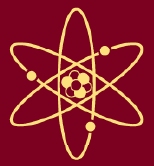PHZ3400-09 Modern Physics: Difference between revisions
Jump to navigation
Jump to search
No edit summary |
(Changing Bullets) |
||
| Line 45: | Line 45: | ||
* Apparatus measure the number of photoelectrons and the maximum Kinetic energy | * Apparatus measure the number of photoelectrons and the maximum Kinetic energy | ||
* Observations not explained by classical wave theory of light | * Observations not explained by classical wave theory of light | ||
# Increasing intensity of light increases the number of photoelectrons but not the maximum KE | |||
# Red light emits no electrons independent of intensity | |||
# | |||
==Particle-Wave Duality and de Broglie Wavelength== | ==Particle-Wave Duality and de Broglie Wavelength== | ||
| Line 67: | Line 67: | ||
* Rutherford's scattering experiment | * Rutherford's scattering experiment | ||
* Planetary model contradicts experiments | * Planetary model contradicts experiments | ||
# Stability of matter | |||
# Atomic Spectra lines | |||
* Bohr's Model 1913 basic hypothesis | * Bohr's Model 1913 basic hypothesis | ||
# Electrons in atoms follow classical physics and Rutherford's atomic model | |||
# blah blah | |||
# blah blah | |||
* Bohr's theory applied to hydrogen like atoms | * Bohr's theory applied to hydrogen like atoms | ||
yadda yadda | # yadda yadda | ||
* Line Spectra Rydberg's | * Line Spectra Rydberg's | ||
Revision as of 02:19, 21 January 2009
Ah, the reason we all majored in physics in the first place...
|
| |
| Type | Modern |
| Time period | 19th Century or so |
Modern Physics is [Insert Definition Here]
Introduction
These lectures were given by Dr. Vald's friend/colleague. At the end of the 19th century, scientists had gotten a lot done. But there was no explanation for things that happened at the Quantum level. What happened when things got very small and very fast?
Black Body Radiation
- Blackbody absorbs / not emits light
- Stefan Boltzmann Law I = sigma T^4
- Wien's Law lambda T = b
- Blackbody Radition Spectrum: UV catastrophe
Classical physics does not explain that
- This led to Planck's Hypothesis
Planck's Hypothesis
- radition comes from eletric oscillators
- energy of each mode of oscillation is quantized E = n h v
- Energy can be emitted or absorbed
Specific Heat of Solids
- Cv / Na = const
- Cv = 3 Na K from classical physics
- But at low temperatures C drops sharply and approaches zero
- Phonons: quantization of lattice vibrations
Photoelectric Effect
- Einstein got a nobel prize for this instead of relativity
- Apparatus measure the number of photoelectrons and the maximum Kinetic energy
- Observations not explained by classical wave theory of light
# Increasing intensity of light increases the number of photoelectrons but not the maximum KE # Red light emits no electrons independent of intensity #
Particle-Wave Duality and de Broglie Wavelength
- de Broglie Hypothesis
- everything in nature has both wave and particle nature
- lambda = h / p
- Davidsson Germer experiment
- Thompson Reid experiment
Heisenberg's Uncertainty Principle
- x p > h bar
- t E > h bar
- Measurement always disturbs object
- Deterministric view of nature is fundamentally flawed
Atomic Spectra
- Spectra Lines and Atomic Spectra
- Plum Pudding model of atom
- Rutherford's scattering experiment
- Planetary model contradicts experiments
# Stability of matter # Atomic Spectra lines
- Bohr's Model 1913 basic hypothesis
# Electrons in atoms follow classical physics and Rutherford's atomic model # blah blah # blah blah
- Bohr's theory applied to hydrogen like atoms
# yadda yadda
- Line Spectra Rydberg's
Atomic Shell Structure
- quantum numbers (principal, orbital, magnetic, spin)
- Selectron rule in quantum transitions N = +- 1
- Electron configurations
- Pauli expclusion principle
- Periodic table
Schroedinger Equation
- Describes many things but not waves at a very high energy
